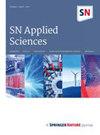Towards efficient video-based action recognition: context-aware memory attention network
IF 2.4
Q2 MULTIDISCIPLINARY SCIENCES
引用次数: 0
Abstract
Abstract Given the prevalence of surveillance cameras in our daily lives, human action recognition from videos holds significant practical applications. A persistent challenge in this field is to develop more efficient models capable of real-time recognition with high accuracy for widespread implementation. In this research paper, we introduce a novel human action recognition model named Context-Aware Memory Attention Network (CAMA-Net), which eliminates the need for optical flow extraction and 3D convolution which are computationally intensive. By removing these components, CAMA-Net achieves superior efficiency compared to many existing approaches in terms of computation efficiency. A pivotal component of CAMA-Net is the Context-Aware Memory Attention Module, an attention module that computes the relevance score between key-value pairs obtained from the 2D ResNet backbone. This process establishes correspondences between video frames. To validate our method, we conduct experiments on four well-known action recognition datasets: ActivityNet, Diving48, HMDB51 and UCF101. The experimental results convincingly demonstrate the effectiveness of our proposed model, surpassing the performance of existing 2D-CNN based baseline models. Article Highlights Recent human action recognition models are not yet ready for practical applications due to high computation needs. We propose a 2D CNN-based human action recognition method to reduce the computation load. The proposed method achieves competitive performance compared to most SOTA 2D CNN-based methods on public datasets.基于视频的高效动作识别:情境感知记忆注意网络
鉴于监控摄像机在我们日常生活中的普遍存在,从视频中识别人类行为具有重要的实际应用价值。该领域的一个持续挑战是开发更有效的模型,能够实时识别和高精度的广泛实施。本文提出了一种新的人体动作识别模型——情境感知记忆注意网络(CAMA-Net),该模型消除了计算量大的光流提取和三维卷积。通过去除这些组件,CAMA-Net在计算效率方面比许多现有方法具有更高的效率。CAMA-Net的一个关键组件是上下文感知记忆注意模块,该注意模块计算从2D ResNet主干获得的键值对之间的相关性评分。这个过程建立了视频帧之间的对应关系。为了验证我们的方法,我们在四个知名的动作识别数据集上进行了实验:ActivityNet, Diving48, HMDB51和UCF101。实验结果令人信服地证明了我们提出的模型的有效性,超越了现有的基于2D-CNN的基线模型的性能。由于计算量大,目前的人体动作识别模型还没有做好实际应用的准备。为了减少计算量,提出了一种基于二维cnn的人体动作识别方法。与大多数基于SOTA 2D cnn的方法相比,该方法在公共数据集上取得了具有竞争力的性能。
本文章由计算机程序翻译,如有差异,请以英文原文为准。
求助全文
约1分钟内获得全文
求助全文

 求助内容:
求助内容: 应助结果提醒方式:
应助结果提醒方式:


